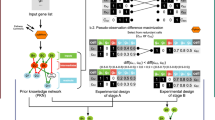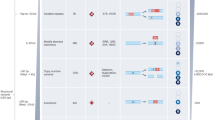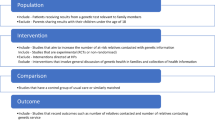Abstract
The world has been startled by the irresponsible experiment of He Jiankui, who used CRISPR to genetically modify human embryos. In this viewpoint, we explore the phenomenon of moral luck in medicine and its bearing on the limits of simple judgements of the kind “everything that ends well is well” or “someone broke the rules, and is therefore blameworthy”. The risks involved in scientific and medical experiments are often brushed aside, when they turn out well. The clinical application of CRISPR in the human germline is presently too risky to be used without more preclinical research and unacceptable without broader societal support, which justifies the call for a moratorium by the scientific community. However, such policies do not determine how to assess cases, where someone was willing to take such risks beyond all rules, guidelines and regulation and succeeds. The policies including the proposed moratorium are as unanimous about the undesirability of current applications of clinical germline editing as they are about the potential importance of this research. What if this potential is achieved by breaking the rules? The paradox of moral luck impinges on this debate. In our analysis, we rebut simplified judgments and advocate a more balanced view on the relation between moral responsibility and the societal consequences of medicine.
Similar content being viewed by others
Log in or create a free account to read this content
Gain free access to this article, as well as selected content from this journal and more on nature.com
or
References
Normile D. Shock greets claim of CRISPR-edited babies. Science. 2018;362:978–9. https://doi.org/10.1126/science.362.6418.978.
European Society for Human Genetics. Response to “Adopt a moratorium on heritable gene editing”. European Society for Human Genetics; 2019. https://www.eshg.org/index.php?id=909. Accessed 18 Apr 2019.
Lander ES, Baylis F, Zhang F, Charpentier E, Berg P, Bourgain C, et al. Adopt a moratorium on heritable genome editing. Nature. 2019;567:165–8. https://doi.org/10.1038/d41586-019-00726-5.
Bredenoord AL, Appleby JB. Mitochondrial replacement techniques: remaining ethical challenges. Cell Stem Cell. 2017;21:301–4. https://doi.org/10.1016/j.stem.2017.08.009.
Cyranoski D. CRISPR-baby scientist fails to satisfy critics. Nat News. 2018. https://doi.org/10.1038/d41586-018-07573-w.
Caplan A He Jiankui’s Moral Mess [Community Blog]. PloS Biologue. 2018. https://blogs.plos.org/biologue/2018/12/03/he-jiankuis-moral-mess/. Accessed 07 Dec 2018.
Wee S-L. China halts work by scientist who says he edited babies’ genes. The New York Times; 2018. https://www.nytimes.com/2018/11/29/science/gene-editing-babies-china.html. Accessed 07 Dec 2018.
Williams B. Moral luck. Cambridge: Cambridge University Press; 1981. pp. 20–39.
Nagel T. Moral luck. Mortal questions. London: Cambridge University Press; 1991. pp. 24–38.
van de Poel I, Sand M. Varieties of responsibility—two problems of responsible innovation. Synthese. 2018. https://doi.org/10.1007/s11229-018-01951-7.
Gross CP, Sepkowitz KA. The myth of the medical breakthrough: smallpox, vaccination, and Jenner reconsidered. Int J Infect Dis. 1998;3:54–60.
Brickman JP. The Eradication of Smallpox. Edward Jenner and the First and Only Eradication of a Human Infectious Disease. J Public Health Policy. 2002;23:517–519. https://doi.org/10.2307/3343253.
Riedel S. Edward Jenner and the history of smallpox and vaccination. Proc (Bayl Univ Med Cent). 2005;18:21–5. PubMed PMID: 16200144.
Williams G. Angel of death: the story of smallpox. Basingstroke: Palgrave Macmillan; 2010.
Boylston AW. The myth of the milkmaid. New Engl J Med. 2018;378:414–5. https://doi.org/10.1056/NEJMp1715349. PubMed PMID: 29385360.
Roberts RM. Serendipity: accidental discoveries in science. New York: John Wiley & Sons; 1989.
Willis NJ. Edward Jenner and the eradication of Smallpox. Scott Med J. 1997;42:118–21. https://doi.org/10.1177/003693309704200407. PubMed PMID: 9507590.
McCullough LB. John Gregory and the invention of professional medical ethics and the profession of medicine. Dordrecht: Kluwer Academic Publishers; 1998.
Truman JT. The compleat physician: John Gregory MD (1724–1773). J Med Biogr. 1995;3:63–70. https://doi.org/10.1177/096777209500300201.
Joy MT, Ben Assayag E, Shabashov-Stone D, Liraz-Zaltsman S, Mazzitelli J, Arenas M, et al. CCR5 Is a therapeutic target for recovery after stroke and traumatic brain injury. Cell. 2019;176:1143–57. https://doi.org/10.1016/j.cell.2019.01.044.
Regaldo A. China’s CRISPR twins might have had their brains inadvertently enhanced. MIT Technology Review. 2019. https://www.technologyreview.com/s/612997/the-crispr-twins-had-their-brains-altered. Accessed 02 Mar 2019.
Khoury AC. The objects of moral responsibility. Philosophical Studies. 2018;175:1357–81. https://doi.org/10.1007/s11098-017-0914-5.12/28/2018.
Funding
Martin Sand's contribution to this paper has been funded by the European Union’s Horizon 2020 research and innovation programme under the Marie Skłodowska-Curie grant agreement No 707404.
Author information
Authors and Affiliations
Corresponding author
Ethics declarations
Conflict of interest
The authors declare no conflict of interest.
Additional information
Publisher’s note: Springer Nature remains neutral with regard to jurisdictional claims in published maps and institutional affiliations.
Rights and permissions
About this article
Cite this article
Sand, M., Bredenoord, A.L. & Jongsma, K.R. After the fact—the case of CRISPR babies. Eur J Hum Genet 27, 1621–1624 (2019). https://doi.org/10.1038/s41431-019-0459-5
Received:
Revised:
Accepted:
Published:
Issue date:
DOI: https://doi.org/10.1038/s41431-019-0459-5



